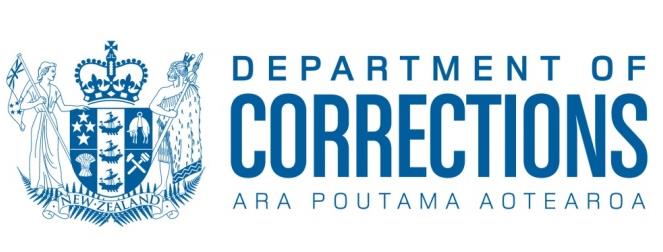
16 July 2024
C182806
#cats
[email address] Tēnā koe
Thank you for your request of 31 May 2024 to the Department of Corrections – Ara
Poutama Aotearoa, requesting information about prison demographics and recidivism rates.
Your request has been considered under the Official Information Act 1982 (OIA).
Corrections is committed to delivering improved outcomes with and for Māori, to reduce
reoffending and address the overrepresentation of Māori in the corrections system.
Our organisational strategy, Hōkai Rangi 2019-2024, expresses our commitment to
delivering better outcomes for Māori and their whānau so that we can begin to address the
significant overrepresentation of Māori in the corrections system. This strategy remains in
place, and we are working on the next iteration of Hōkai Rangi, which will retain the six
outcomes of the original strategy and reaffirm our commitment to this work.
Through Hōkai Rangi we have established a number of initiatives aimed at improving
outcomes for Māori in the corrections system.
Building meaningful and purposeful relationships with Māori providers, iwi, and hapū has
been a critical part of Hōkai Rangi and remains essential to our work. Across Corrections, we
have a number of partnership and service agreements with iwi, hapū and Māori providers to
support the delivery of programmes and services in prisons and the community.
Corrections provides offence-focused programmes, educational opportunities, vocational
and employment training, health services, mental health and addiction programmes,
cultural support services, motivational sessions, wrap-around whānau support,
reintegration services, intensive residential programmes, and transitional accommodation
support to people serving sentences in prison and in the community. These rehabilitation
and reintegration services support people to address the causes of their offending and
provide a strong foundation from which they can establish a positive future.
NATIONAL OFFICE, WELLINGTON
Mayfair House, 44 – 52 The Terrace, Wellington, 6011, Private Box 1206, Wellington 6140,
Phone +64 4 460 3000
www.corrections.govt.nz
I will address your requests in turn. Please note that where questions can be responded to
together, these questions have been combined for ease of reply. You requested:
The demographic breakdown of the New Zealand prison population over the past five
years, including the percentage of Maori inmates.
This part of your request is refused in accordance with section 18(d) of the OIA, on the
grounds that it is publicly available information. This information is published quarterly on
Corrections’
Prison Statistics page and are available to view on our website here:
https://www.corrections.govt.nz/resources/statistics/quarterly_prison_statistics. Additionally, Corrections publishes further information on the Māori prison population in
our Annual Reports which are available to view here:
https://www.corrections.govt.nz/resources/strategic_reports/annual-reports. For example, the 2022/23 Annual Report, pages 36 to 38 contain further statistics on Māori
prisoners:
https://www.corrections.govt.nz/__data/assets/pdf_file/0007/50578/Annual_Report_2023
_v20.pdf. Corrections’ 2023/24 Annual Report will be published in due course.
Reports and evaluations on the factors contributing to recidivism among Māori
prisoners.
Please note, we can answer this part of your request as it relates to information created or
held by Corrections. However, you may wish to consider that reports on this topic are also
likely to have been created by other agencies or research institutes.
The overrepresentation of Māori in the justice system is well recognised and we
acknowledge that it is one of the most significant challenges we need to address. While
Corrections has not created specific reports and evaluations in recent years solely focused
on the ‘factors contributing to recidivism among Maori prisoners’, previous research
documents that may be of interest to you are available on our website at the following link:
https://www.corrections.govt.nz/resources/research. Corrections’ organisational strategy, Hōkai Rangi may also be of interest to you, and is
available on our website at the following link:
https://www.corrections.govt.nz/__data/assets/pdf_file/0003/38244/Hokai_Rangi_Strategy
.pdf. Please also note that while developing Hōkai Rangi, Corrections considered the findings of
the Waitangi Tribunal’s report,
Tū Mai te Rangi! Report on the Crown and Disproportionate
Reoffending Rates (2017). This report is publicly available, at:
https://forms.justice.govt.nz/search/Documents/WT/wt_DOC_121273708/Tu%20Mai%20T
e%20Rangi%20W.pdf.
Annual recidivism rates over the past five years, broken down by ethnicity, age group,
and gender.
Corrections uses the Recidivism Indices to calculate recidivism rates among the prison
population and those sentenced to community-based sentences. The Recidivism Indices are
the percentage of people in our management in any given cohort who are reconvicted
within a set period of time (the follow-up period), and who receive either a prison sentence
(reimprisoned) or any Corrections-administered sentence (resentenced). These statistics are
broken down by ethnicity, age group and gender.
Recidivism Indices statistics, as well as information on how to interpret this information, are
published in our Annual Reports, linked to above. For information on the most recent
Recidivism Indices statistics, please refer to pages 203 to 207 of the 2022/23 Annual Report.
Information on any specific rehabilitation or intervention programs targeted at Maori
prisoners and their success rates.
Corrections uses the Rehabilitation Quotient (RQ) to measure the impact that our
interventions have on reoffending. Reoffending is measured in terms of reimprisonment
rates and rates of resentencing to a Corrections-managed sentence. The RQ compares the
reimprisonment and resentencing rates of people who have participated in an intervention,
with the reoffending rates of similar people (matched through a range of factors) who have
not participated in either that specific intervention or a similar type of intervention. RQ
results are limited to core rehabilitation programmes with sufficient volumes of participants
to enable reliable statistical analysis.
As with Recidivism Indices, RQ rates are published each year via Corrections’ Annual Reports
which are available on our website as linked to above. For information on the most recent
RQ rates, please refer to pages 201 and 202 of the 2022/23 Annual Report.
While Māori can participate in all rehabilitation interventions in prisons and Corrections is
continuing in our efforts to incorporate Te Ao Māori approaches to existing programmes,
the only programme focused on Māori for which we can currently measure the RQ is Mauri
Tū Pae. Mauri Tū Pae (formerly known as the Māori therapeutic programme) is a group-
based programme for people assessed as medium risk and is delivered in special focus units.
Mauri Tū Pae is for men in prison with a range of offending needs and teaches them skills to
alter the thoughts, attitudes and behaviours that led to their offending.
Corrections additionally delivers a high-intensity programme for women, Kimihia, which was
co-designed with a Māori psychologist, incorporating feedback from those with lived-

experience and their whānau. The programme weaves Te Ao Māori and Western
psychological approaches to rehabilitation.
Further information on Māori focused interventions is also outlined on pages 76 to 77 and
page 82 of Corrections’ 2022/23 Annual Report.
Data on the average length of sentences served by prisoners, broken down by
ethnicity and age group.
Corrections manages people on sentences and orders at the direction of the Courts and the
New Zealand Parole Board. Corrections does not determine whether a person is sentenced
to prison or the length of their sentence.
Please see the attached Appendix One, which provides the average number of days served
by prisoners, at the time of their release, broken down by ethnicity and age group. Please
note that this information has been provided for the past five years, in order to align with
your above requests.
Please note that this response may be published on Corrections’ website. Typically,
responses are published quarterly or as otherwise determined. Your personal information
including name and contact details will be removed for publication.
I hope this information is helpful. I encourage you to raise any concerns about this response
with Corrections. Alternatively, you are advised of your right to raise any concerns with the
Office of the Ombudsman. Contact details are: Office of the Ombudsman, PO Box 10152,
Wellington 6143.
Ngā mihi
Alice Sciascia
Deputy Chief Executive
Strategy and Corporate Services
Appendix One: Average number of days served by prisoners, at the time of their release,
broken down by ethnicity and age group for the last five financial years.
Average number of days served by prisoners at the time of release, by
ethnicity
Ethnicity
2019/20
2020/21
2021/22
2022/23
2023/24*
European
452.0
533.9
563.3
486.5
452.3
Māori
370.3
405.0
450.4
405.1
362.6
Pacific
544.6
587.8
654.0
753.8
476.4
Other (incl. Asian)
561.1
692.2
842.8
682.9
578.2
Unknown
391.8
480.0
463.7
468.0
193.6
Average for all
416.5
467.0
512.2
464.0
402.5
ethnicities
Average number of days served by prisoners at the time of release, by age
group
Age group
2019/20
2020/21
2021/22
2022/23
2023/24*
Under 20
246.8
298.0
353.9
283.3
344.3
20 - 24
339.5
364.2
398.2
348.1
337.6
25 - 29
330.0
381.2
436.7
391.2
339.8
30 - 39
368.1
398.4
434.2
366.2
344.2
40 - 49
473.0
518.6
516.5
468.7
397.7
50 - 59
708.6
744.6
887.7
774.8
642.6
60 and over
1179.6
1529.3
1373.3
1702.0
1028.3
Not recorded
-
-
49.0
-
85.0
Average for all
416.5
467.0
512.2
464.0
402.5
ages
Notes for tables:
• *Data for the 2023/24 financial year is current as of 31 May 2024.
• A person would be counted each time they were released, by what age they were at
the day of release, and by how many days they had served at release.
• A person who was released from a sentence of imprisonment twice within the same
year would therefore be counted twice.
• Data is only included for those people who were released in the years provided.
Those still serving sentences are not included in this data.
• Days served includes remand days credited to the sentence.
• All ethnicity information is self-reported by prisoners upon their reception at prison
and we do not attempt to verify or confirm a person’s ethnicity. Furthermore,
prisoners are able to identify with multiple ethnicities. The information provided is
therefore based on their primary ethnicity.
• Corrections manages people on sentences and orders at the direction of the Courts
and the New Zealand Parole Board. Corrections does not determine whether a
person is sentenced to prison or the length of their sentence.

